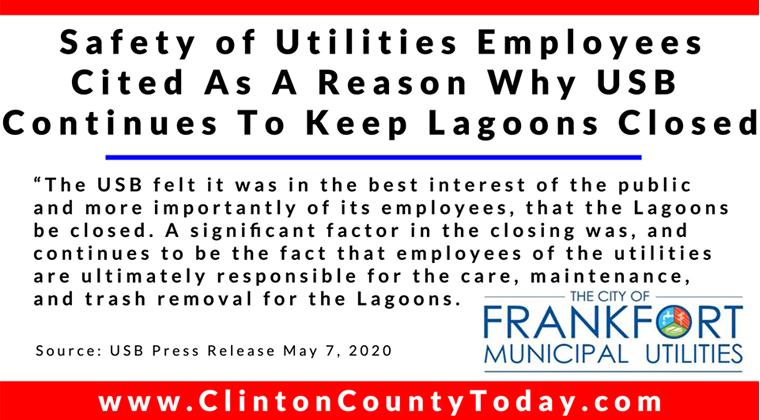Update (5/12/20): 100 Clinton County Residents Have Now Tested Positive For COVID-19
The Indiana State Department of Health (ISDH) announced today, Tuesday, May 12, 2020, Clinton County has now had 100 residents test positive for COVID-19. There is 1 death related to COVID-19 in Clinton County. At least 773 residents of Clinton County have been tested as reported by the ISDH.
Additionally, the ISDH announced that 566 additional Hoosiers have been diagnosed with COVID-19 through testing at ISDH, the Centers for Disease Control and Prevention (CDC) and private laboratories. That brings to 25,127 the total number of Indiana residents known to have the novel coronavirus following corrections to the previous day’s total.
A total of 1,444 Hoosiers have died to date. Deaths are reported based on when data are received by ISDH and occurred over multiple days.
To date, 150,510 tests have been reported to ISDH, up from 146,688 on Saturday.










